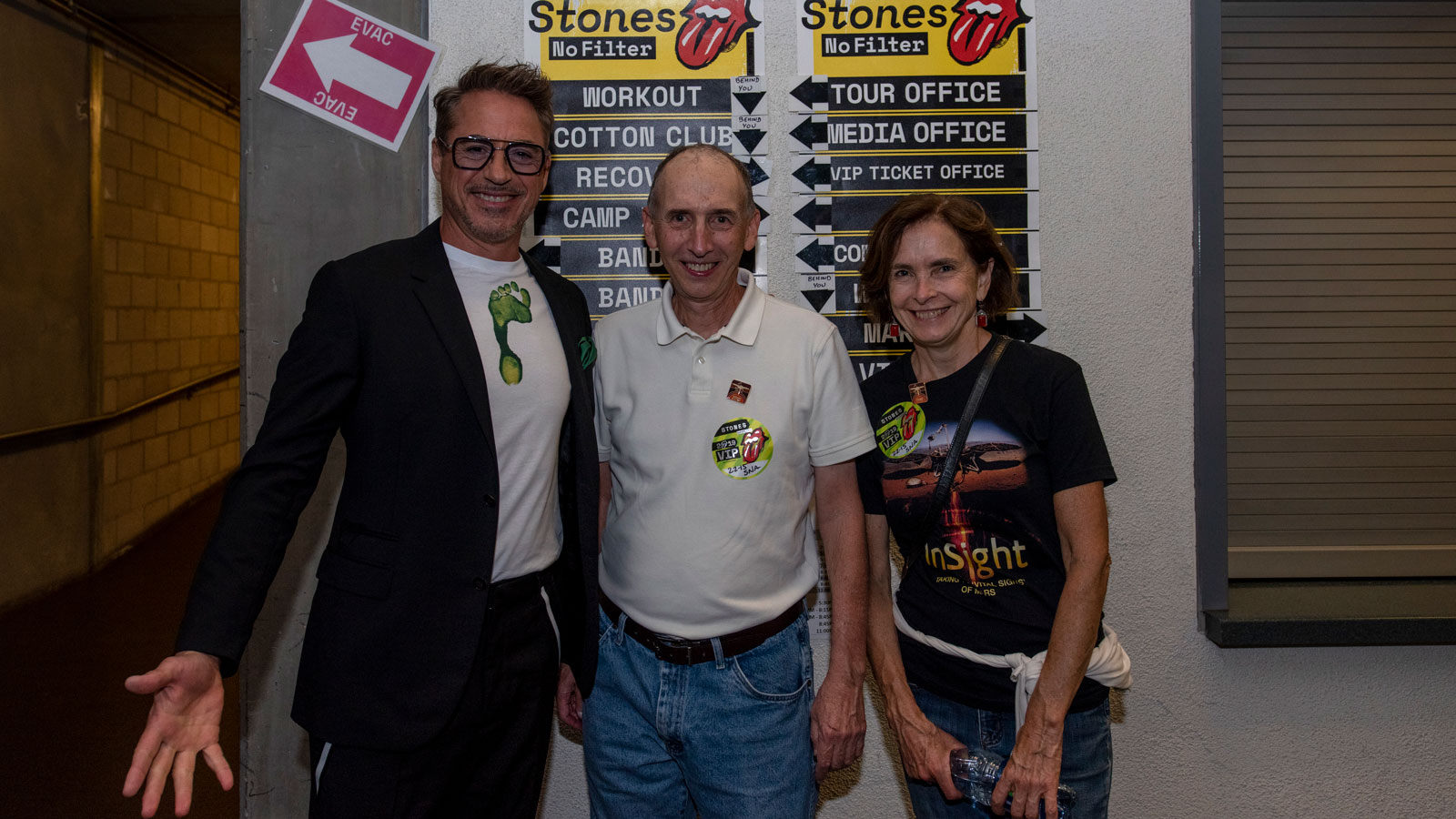NASA Names Record-Setting Mars Rock After The Rolling Stones
The Rolling Stones just got an otherworldly tribute.
The team behind NASA's InSight Mars lander has named a particularly peripatetic Red Planet rock after the legendary band.
The moniker "Rolling Stones Rock" was announced Thursday night (Aug. 22) by actor Robert Downey Jr. at the Rose Bowl in Pasadena, California — the home city of NASA's Jet Propulsion Laboratory (JPL), which manages InSight's mission — just before the Stones took the stage. The unveiling came after hours of anticipation after a cryptic video Downey Jr. posted on Twitter.
Watch: Mick Jagger Talks 'Rolling Stones' Mars Rock
Video: Robert Downey Jr. Unveils 'Rolling Stones' Rock
"What a wonderful way to celebrate the 'Stones No Filter' tour arriving in Pasadena," the band said in a JPL statement. "This is definitely a milestone in our long and eventful history. A huge thank you to everyone at NASA for making it happen."
Rolling Stones Rock, which is a bit bigger than a golf ball, was disturbed by InSight's thrusters during the lander's touchdown on Nov. 26, 2018, NASA officials said. The stone rolled about 3 feet (1 meter) as a result.
"In images taken by InSight the next day, several divots in the orange-red soil can be seen trailing Rolling Stones Rock," NASA officials wrote in the JPL statement. "It's the farthest NASA has seen a rock roll while landing a spacecraft on another planet."
Breaking space news, the latest updates on rocket launches, skywatching events and more!


The new name is an informal one; it has not been approved by the International Astronomical Union, the body that designates "official" monikers for cosmic objects and their features. But Rolling Stones Rock will appear on working Mars maps used by scientists, NASA officials said. (Team members on Mars surface missions have a long history of nicknaming stones, outcrops and other features to make discussion of scientific results easier.)
"I've seen a lot of Mars rocks over my career," said InSight team member Matt Golombek, who has worked on every NASA Mars surface mission since 1997. "This one probably won't be in a lot of scientific papers, but it's definitely one of the coolest."
InSight, whose full name is "Interior Exploration using Seismic Investigations, Geodesy and Heat Transport," is tasked with mapping the Martian interior in unprecedented detail. The lander is equipped with a suite of incredibly sensitive seismometers, which the mission team uses to detect and characterize marsquakes.
InSight also features a burrowing heat probe dubbed "the mole," which was supposed to bury itself at least 10 feet (3 meters) underground. But the mole hit a snag before reaching its intended depth, and mission team members are still trying to diagnose and fix the issue.
- 7 Biggest Mysteries of Mars
- What Is Mars Made Of? | Composition of Planet Mars
- Occupy Mars: History of Robotic Red Planet Missions (Infographic)
Mike Wall's book about the search for alien life, "Out There" (Grand Central Publishing, 2018; illustrated by Karl Tate), is out now. Follow him on Twitter @michaeldwall. Follow us on Twitter @Spacedotcom or Facebook.

Michael Wall is a Senior Space Writer with Space.com and joined the team in 2010. He primarily covers exoplanets, spaceflight and military space, but has been known to dabble in the space art beat. His book about the search for alien life, "Out There," was published on Nov. 13, 2018. Before becoming a science writer, Michael worked as a herpetologist and wildlife biologist. He has a Ph.D. in evolutionary biology from the University of Sydney, Australia, a bachelor's degree from the University of Arizona, and a graduate certificate in science writing from the University of California, Santa Cruz. To find out what his latest project is, you can follow Michael on Twitter.


